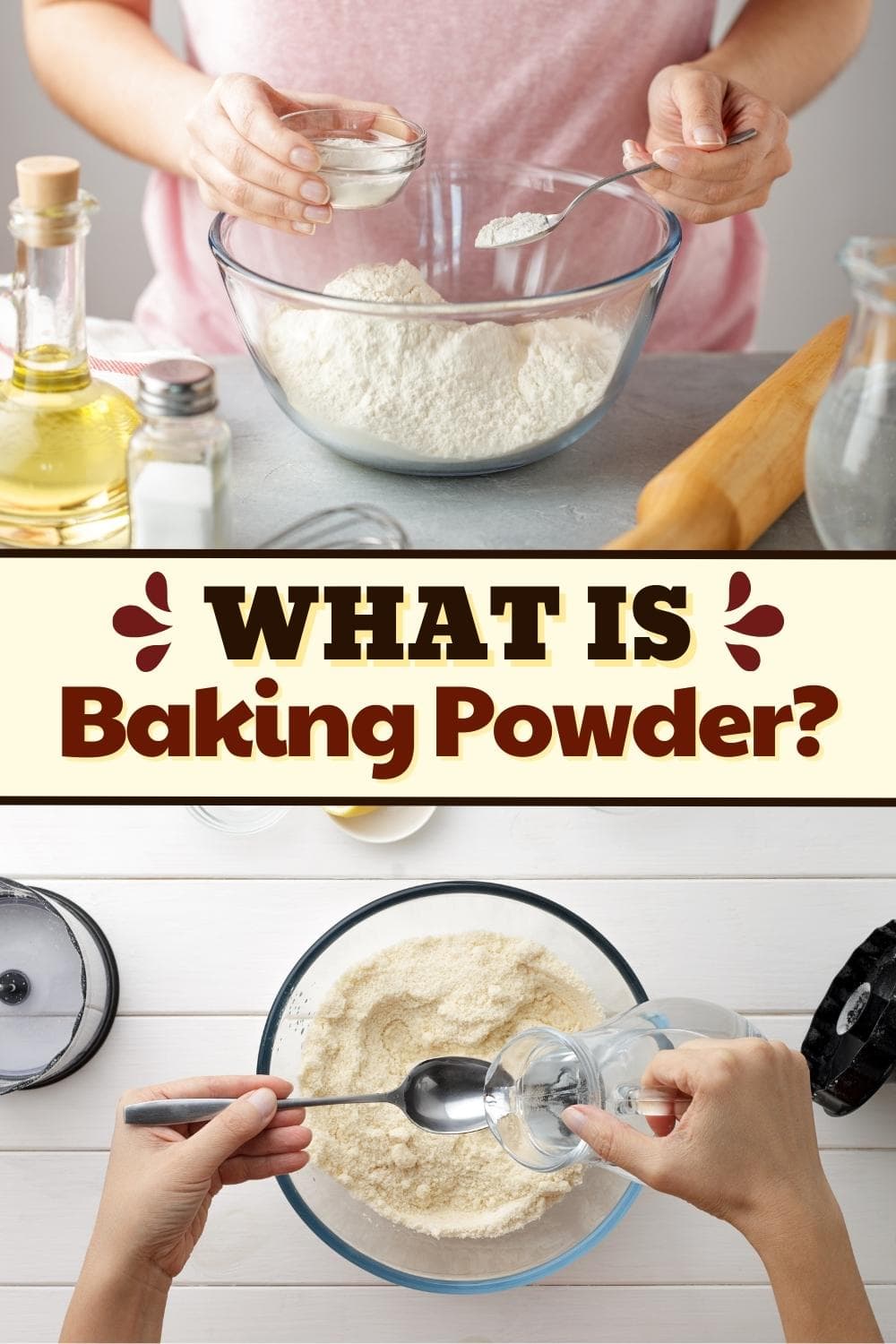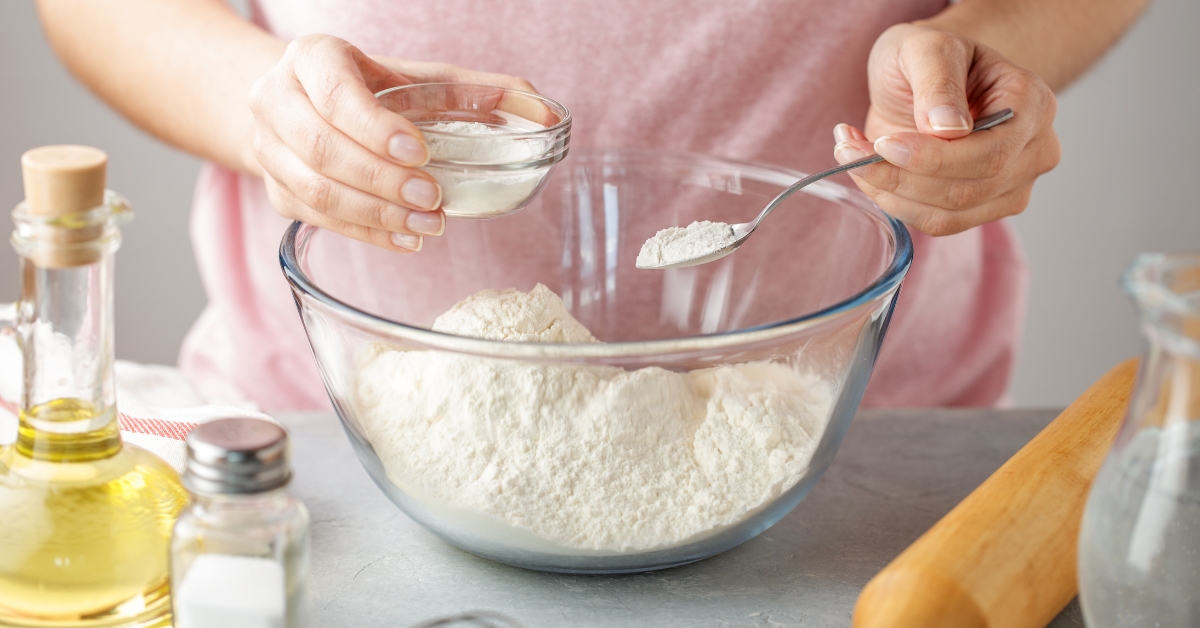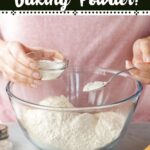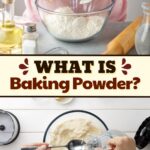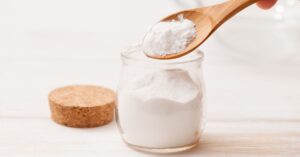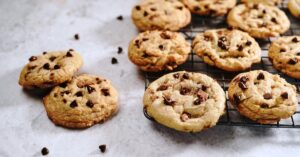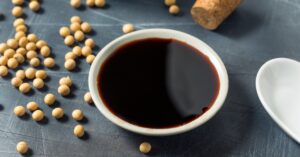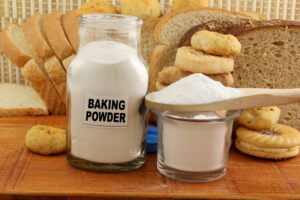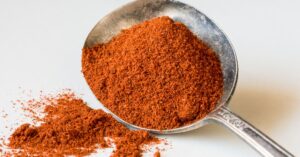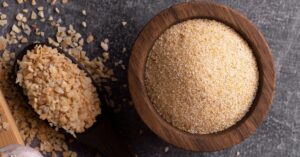Have you ever seen a recipe that calls for baking powder?
If you’re not a big baker, you may have wondered, What is baking powder?
If you’re unsure what it is or why you need to use it, you’re in the right place.
I’m here to tell you everything you need to know.
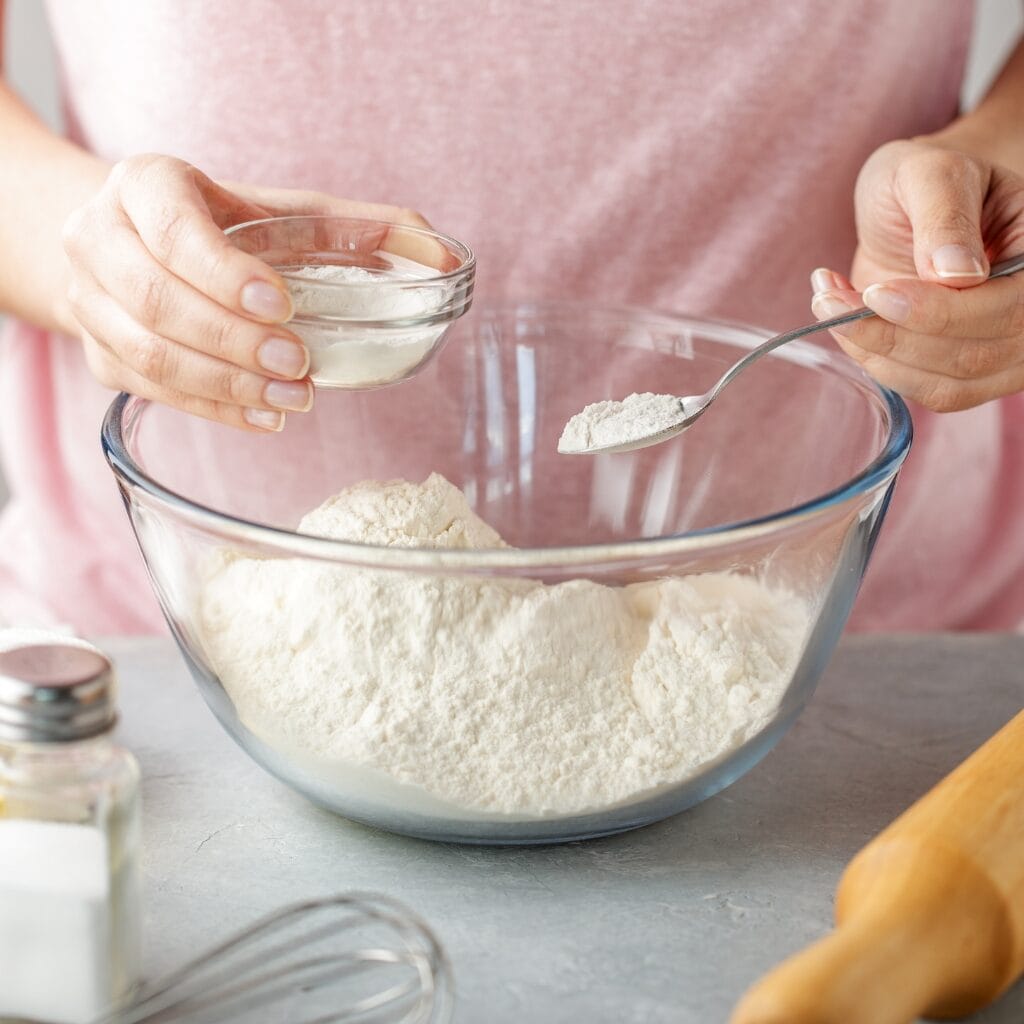
After all, baking powder is a key ingredient that every baker should understand.
It’s often exactly what you need to make delicious treats.
After reading this, you’ll never have to wonder about baking powder again.
Instead, you’ll be totally confident the next time it pops up in an ingredient list.
What Is Baking Powder?
The first thing you must know about baking powder is that it’s not baking soda.
It contains baking soda (sodium bicarbonate). But it also has cornstarch and some type of acid in its makeup.
It’s a dry, powdery substance primarily used for baking.
It helps your cakes, breads, and other baked goods to rise correctly.
Double-acting baking powder is the most common type.
I’ll discuss how double-acting baking powder works in the following section.
How Does Baking Powder Work?
Baking powder works by performing chemical reactions in two stages.
The combination of sodium bicarbonate and the acid trigger reactions at different times.
The first chemical reaction occurs when you mix it with other ingredients in the recipes.
When it comes in contact with the other ingredients, it releases carbon dioxide.
This causes the batter for whatever you’re baking to expand.
A second reaction occurs once you stick the batter in the oven.
Once the heat hits the batter, it causes the baking powder to release even more carbon dioxide.
This causes the bread, cake, etc., to rise. Eventually, the baking powder releases all its stored-up CO2, and the rising stops.
Then, you can remove your tasty treat from the oven and marvel at what it’s turned into.
Of course, you may be wondering what cornstarch does since I didn’t mention it. In fact, it has no part to play in chemical reactions.
It’s still an essential ingredient in baking powder, though.
Cornstarch performs two vital tasks in baking powder:
- It prevents baking powder from clumping, which would render it unusable.
- It absorbs moisture from the air. This ensures baking powder doesn’t trigger its own chemical reaction before it’s added to other ingredients.
So, as you can see, baking powder definitely needs cornstarch.
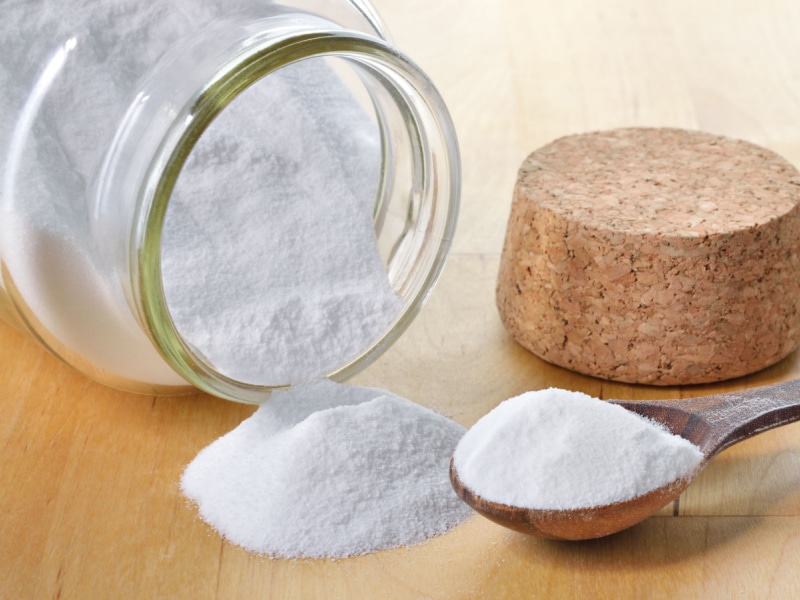
Baking Powder vs. Baking Soda (What’s the Difference?)
As I said at the beginning, baking soda and baking powder are not the same.
While both are used to help baked goods rise, they have some key differences that we’ll discuss here.
The primary difference between the two is that you can’t use baking soda by itself.
It’s a base only, and it contains no balancing acid. Baking powder includes both.
As I mentioned, baking powder is baking soda.
Only, it’s baking soda mixed with cornstarch and an acid, typically cream of tartar.
That means baking powder is self-contained.
Because it has both an acid and a base, it can trigger its own chemical reactions and balance its own flavors.
Baking soda, on the other hand, is just the base.
You’ll also have to add a balancing amount of your chosen acid when you use it. (Lemon juice and buttermilk are popular options.)
Baking soda is also more concentrated than baking powder.
You’d need to use far less to achieve the same leavening effects you’d get with baking powder.
Finally, you can substitute baking powder for baking soda. However, the opposite is not true.
Baking soda can’t be substituted for baking powder.
(Not without making some other tweaks to the recipe, anyway.)
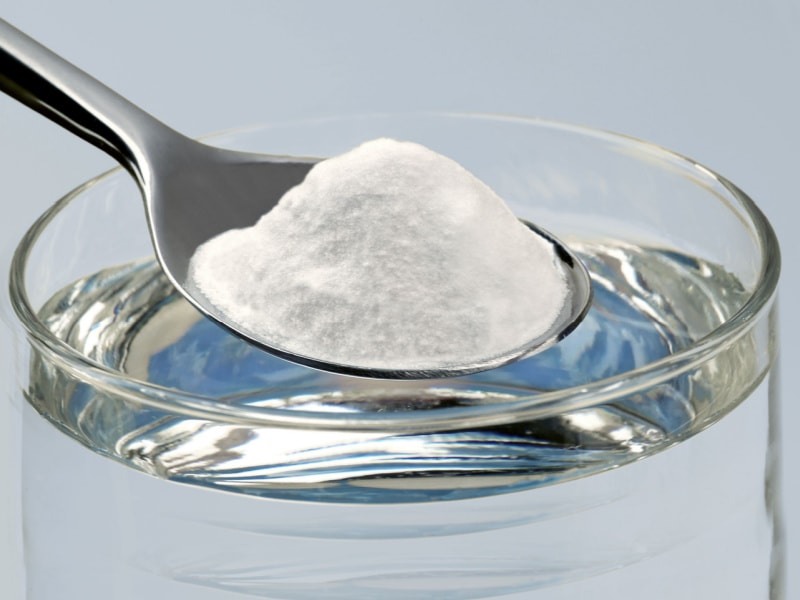
How to Test Baking Powder for Freshness
Testing baking powder for freshness is a simple task. Here are the steps to follow:
- Use a spoon to add three tablespoons of warm water to a glass.
- Then, add 1/2 teaspoon of baking powder to the water.
- Stir gently.
- Check to see if the water gets fizzy.
If you notice a visible fizzy reaction, the baking powder is fresh.
However, if nothing happens, your baking powder is no longer any good. You need to replace it.
Most experts recommend replacing your baking powder every 6 months. Some say 3 months is better.
However, if you keep it in a dry, cool place, it should last up to 6 months.
Baking Powder Substitute
The best substitute for baking powder is no substitute.
Instead, use common pantry staples to whip up your own baking powder.
Here’s what you’ll need to make one cup of baking powder:
- 4 tablespoons baking soda
- 8 tablespoons cream of tartar
- 4 tablespoons cornstarch
Simply mix all of the ingredients together in a sealable, air-tight container.
Use as much as you need. Then, seal the jar tightly and store it in a cool, dry place.
You can test it for freshness just as you would regular baking powder when you need it again.
